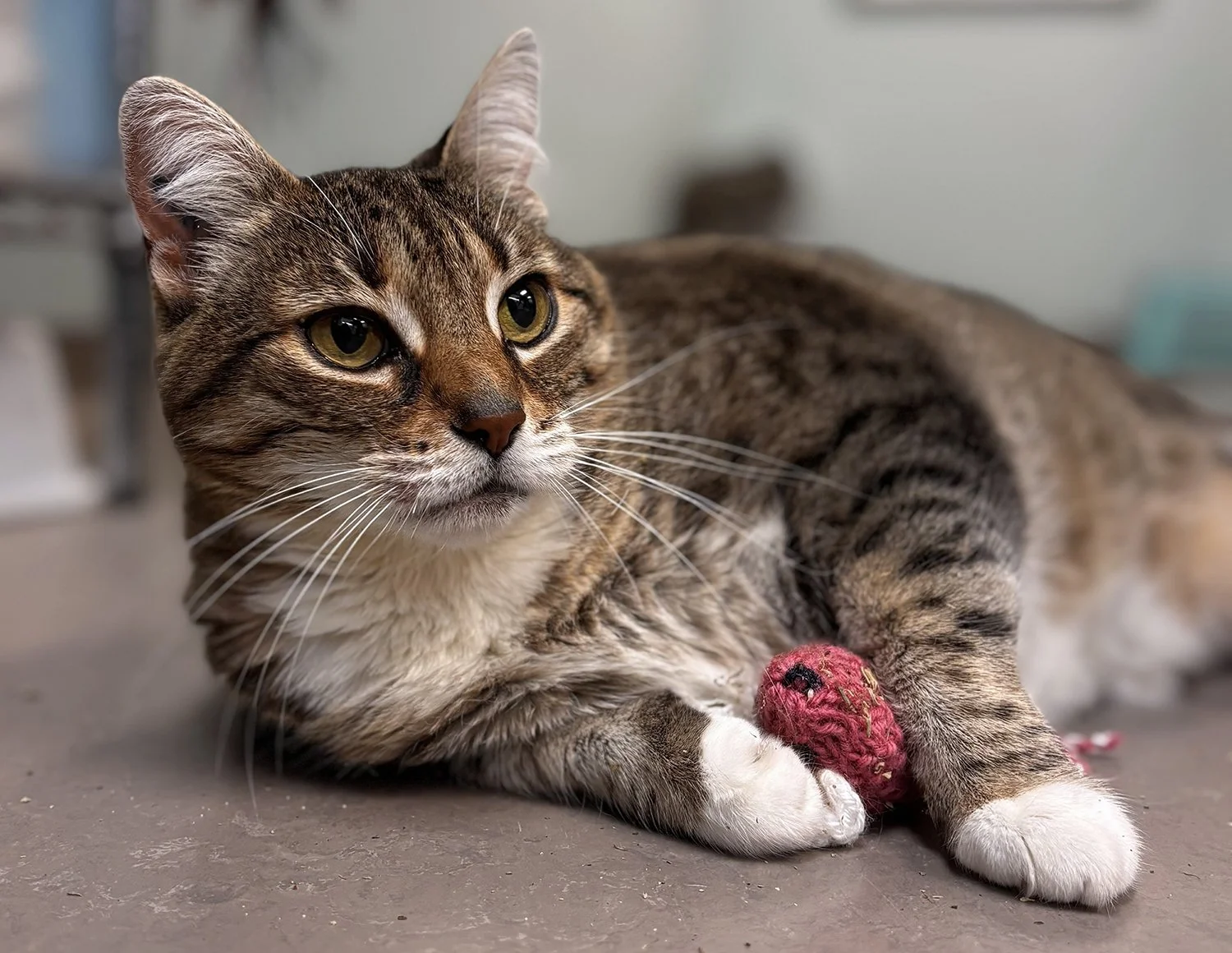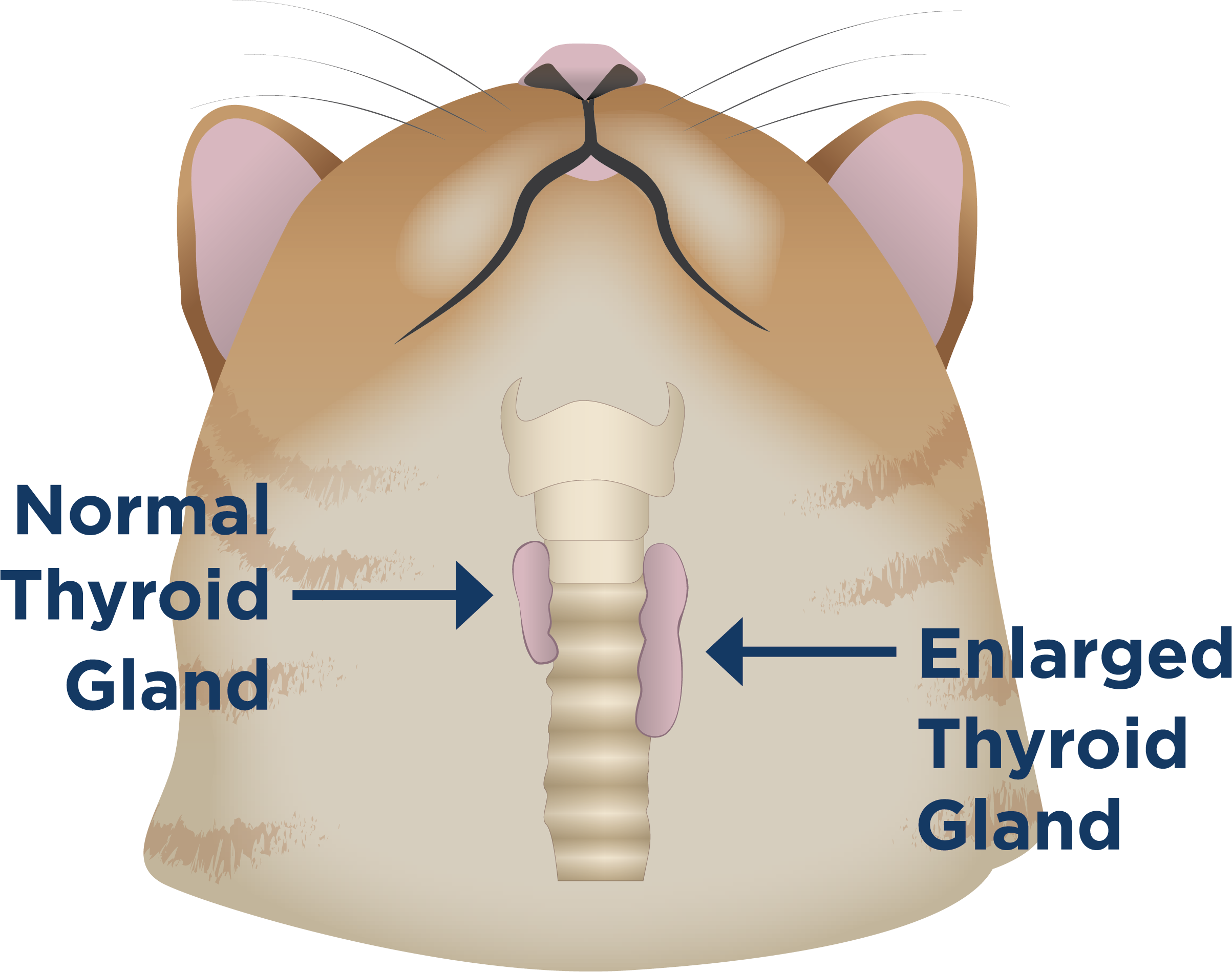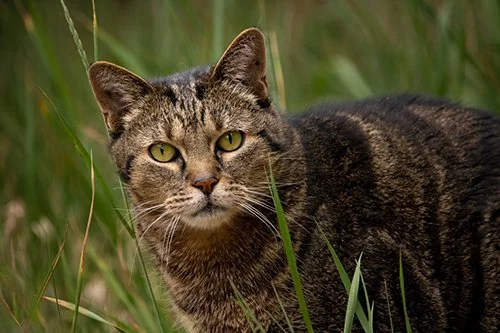What is feline hyperthyroidism?
The paired thyroid glands in your cat’s neck use iodine to produce thyroid hormone (T4) which controls their metabolic rate. Hyperthyroidism results when a tumour in the thyroid tissue produces excessive amounts of thyroid hormone, causing damage to and dysfunction of many body systems. As the tumour grows, the production of thyroid hormone increases, escalating the severity of the disease over time
Feline hyperthyroidism is a disease of senior cats. In most cases, the tumour is benign with only a small percentage of cats having a cancerous growth. Over time, benign thyroid tumours, even those controlled using medications, will continue to grow and can transform into malignant cancers, which are harder to cure.
While fatal if left untreated or poorly regulated, hyperthyroidism can be safely treated with radioactive iodine (I-131). In contrast with medications, I-131 offers a lasting solution by targeting and eliminating the abnormal thyroid tissues.
Common symptoms of feline hyperthyroidism:
Progressive weight loss and muscle wasting
Increased appetite
Vomiting and/or diarrhea
Increased drinking and urination
Increased activity levels and vocalization
Unkempt hair coat
Zimmy 2019
Zimmy 2021, after RAI Treatment
Your veterinarian may also notice an enlarged thyroid nodule, increased heart rate, and/or irregular rhythm due to damage to the heart. Hyperthyroidism is diagnosed by an elevation in the thyroid hormone (T4) level on a blood test.
Learn about treatment options.




